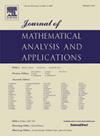Rebricking frames and bases
IF 1.2
3区 数学
Q1 MATHEMATICS
Journal of Mathematical Analysis and Applications
Pub Date : 2024-11-14
DOI:10.1016/j.jmaa.2024.129051
引用次数: 0
Abstract
In 1949, Denis Gabor introduced the “complex signal” (nowadays called “analytic signal”) by combining a real function f with its Hilbert transform Hf to a complex function . His aim was to extract phase information, an idea that has inspired techniques as the monogenic signal and the complex dual tree wavelet transform. In this manuscript, we consider two questions: When do two real-valued bases or frames and form a complex basis or frame of the form ? And for which bounded linear operators A does form a complex-valued orthonormal basis, Riesz basis or frame, when is a real-valued orthonormal basis, Riesz basis or frame? We call this approach rebricking. It is well-known that the analytic signals don't span the complex vector space , hence H is not a rebricking operator. We give a full characterization of rebricking operators for bases, in particular orthonormal and Riesz bases, Parseval frames, and frames in general. We also examine the special case of finite dimensional vector spaces and show that we can use any real, invertible matrix for rebricking if we allow for permutations in the imaginary part.
重新砌砖框架和基础
1949年,Denis Gabor通过将实函数f与其希尔伯特变换Hf组合为复函数f+iHf,引入了“复信号”(现在称为“解析信号”)。他的目标是提取相位信息,这个想法启发了单基因信号和复对偶树小波变换等技术。在本文中,我们考虑两个问题:当两个实值基或框架{fn:n∈n}和{gn:n∈n}形成形式为{fn+ign:n∈n}的复基或框架时?当{fn:n∈n}是实值标准正交基、Riesz基或框架时,{fn+iAfn:n∈n}对哪些有界线性算子A构成复值标准正交基、Riesz基或框架?我们称这种方法为“重建”。众所周知,解析信号不会张成复向量空间L2(R;C),因此H不是重构算子。我们给出了基,特别是标准正交和Riesz基,Parseval框架和一般框架的重构算子的完整表征。我们还研究了有限维向量空间的特殊情况,并证明如果允许虚部置换,我们可以使用任何实的、可逆的矩阵进行重构。
本文章由计算机程序翻译,如有差异,请以英文原文为准。
求助全文
约1分钟内获得全文
求助全文
来源期刊
CiteScore
2.50
自引率
7.70%
发文量
790
审稿时长
6 months
期刊介绍:
The Journal of Mathematical Analysis and Applications presents papers that treat mathematical analysis and its numerous applications. The journal emphasizes articles devoted to the mathematical treatment of questions arising in physics, chemistry, biology, and engineering, particularly those that stress analytical aspects and novel problems and their solutions.
Papers are sought which employ one or more of the following areas of classical analysis:
• Analytic number theory
• Functional analysis and operator theory
• Real and harmonic analysis
• Complex analysis
• Numerical analysis
• Applied mathematics
• Partial differential equations
• Dynamical systems
• Control and Optimization
• Probability
• Mathematical biology
• Combinatorics
• Mathematical physics.

 求助内容:
求助内容: 应助结果提醒方式:
应助结果提醒方式:


